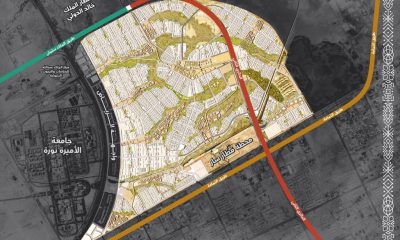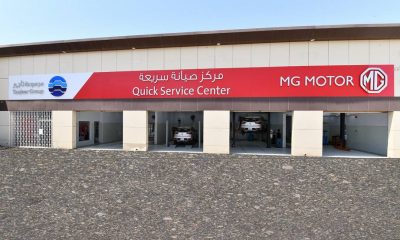كشف ملحق تقرير إريكسون للاتصالات النقالة الخاص بمنطقة الشرق الأوسط وشمال شرق أفريقيا، أنه على الرغم من التباين العالي في مستويات انتشار حلول وتقنيات تكنولوجيا المعلومات والاتصالات في الأسواق، إلا أن معدلات انتشار الهاتف تتواصل بوتيرة سريعة. ومن المتوقع أن تشهد المنطقة ارتفاع حركة البيانات النقالة بمعدل 14 ضعفاً ما بين العامين 2014 و2020، في حين سيبلغ معدل النمو العالمي 9 أضعاف فقط.
وقد صنف التقرير دول مجلس التعاون الخليجي ضمن الأسواق المتقدمة، حيث تتميز هذه البلدان بتبني أحدث تقنيات الاتصال النقال والخدمات المبتكرة وارتفاع معدلات استهلاك البيانات والمنافسة العالية، فضلاً عن أعلى مستويات الناتج المحلي الإجمالي للفرد في المنطقة بأسرها.
وقد تبنى نحو 40٪ من بلدان المنطقة بأسرها تكنولوجيا الجيل الرابع، إلا أنها مع ذلك لا تمثل سوى 1٪ من الاشتراكات العالمية، ومعظمها يتركز في دول الخليج. وتتسم هذه البلدان، وخاصة قطر والإمارات العربية المتحدة، بأعلى معدلات استخدام الهواتف الذكية في العالم، فضلاً عن ارتفاع معدلات استخدام الإنترنت على الأجهزة المختلفة.
وقالت رافية إبراهيم، رئيسة شركة إريكسون في منطقة الشرق الأوسط وشرق أفريقيا: “تشهد جميع أنحاء المنطقة تطورات مضطردة وكبيرة على صعيد تكنولوجيا المعلومات والاتصالات. وباعتبارها سوقاً متقدمة، تتخذ المملكة العربية السعودية خطوات هامة للتحول نحو المجتمع الشبكي، وتشهد معدلات عالية من الإلمام باستخدام التقنيات الحديثة في أوساط سكانها، حيث أصبحت الإنترنت جزءاً لا يتجزأ في حياتهم الشخصية والمهنية. وبغية ترسيخ دعائم مستقبل أكثر ارتباطاً، من الضروري أن تواصل شركات الاتصال تحسين جودة الخدمات، وخاصة في هذه المنطقة، حيث تمتلك سرعة الشبكة تأثيراً كبيراً على سلوك المستخدم. ويقدم تقريرنا للاتصالات النقالة لمحة عن مستقبل هذا القطاع، ما يسمح لنا باستغلال الفرص التي سيوفرها المجتمع الشبكي، حيث سيتصل بالشبكة أي شيء يمكن أن يستفيد من حلول الاتصال”.
وستضم المنطقة نحو 680 مليون مشترك اتصال نقال في المجمل بنهاية العام 2014. ومن المتوقع أن تنمو اشتراكات الهاتف النقال بمعدل نمو سنوي مركب يبلغ 6٪ ما بين العامين 2014 و2020 لتصل إلى أكثر من 970 مليون دولار.
وبحسب تقرير إريكسون للاتصالات النقالة، ففي العام 2020 ستوفر معدلات نمو التقنيات واشتراكات الهاتف النقال مستويات غير مسبوقة من الربط على مستوى المنطقة.
اشتراكات الجيل الرابع ترتفع بمعدل ثلاثة أضعاف في العام 2015
تواصل اشتراكات الجيل الرابع ارتفاعها، ومن المتوقع أن تنمو بمعدل ثلاث أضعاف في العام 2015 لوحده، لتتجاوز 210 ملايين بحلول العام 2020، أي ما يعادل نحو 20٪ من إجمالي اشتراكات الهاتف النقال.
وستستأثر الهواتف الذكية بنسبة 17٪ (125 مليون) من إجمالي اشتراكات الهاتف النقال في نهاية العام 2014. وفي ضوء انخفاض تكلفة الهواتف الذكية وتوافرها على نطاق واسع وتنامي توفر شبكات الإنترنت النقال عريض النطاق، سترتفع اشتراكات الهواتف الذكية في جميع الأسواق. ويتوقع أن تبلغ الهواتف الذكية نحو 40٪ من إجمالي اشتراكات الهواتف النقالة المتوقع وصولها إلى 970 مليون بنهاية العام 2020.
حركة البيانات النقالة تنمو بمعدل 14 ضعفاً بحلول العام 2020
يتوقع أن تشهد كمية البيانات المستهلكة شهرياً لكل هاتف ذكي نشط زيادة كبيرة بحلول العام 2020 لتصل إلى نحو 5 غيغابايت وسطياً، وذلك مقارنة مع 0.8 غيغابايت وسطياً في العام 2014.
وعادة ما يجري استخدام التطبيقات والخدمات التي تتطلب بيانات عالية في مجال الاتصال والترفيه من قبل أصحاب الهواتف الذكية. وفي هذا الإطار، ستواصل حركة بيانات الفيديو النقالة نموها مدفوعة بتطبيقات مشاهدة الفيديو وتنامي انتشار الفيديو على مواقع الإعلام الاجتماعي.

The inaugural appendix to the Ericsson (NASDAQ:ERIC) Mobility Report for the Middle East and North East Africa, reveals that, despite the market being extremely varied with regards to Information & Communications Technology (ICT) adoption and mobile penetration, the proliferation of mobile technologies continues at a rapid pace. Mobile data traffic in the Middle East and North East Africa region is expected to grow 14 times between 2014 to 2020, while globally data will expand 9 times.
The report categorized the GCC (Gulf Corporation Council) market as one of the ”Advanced” markets. These countries are characterized by advanced mobile technologies, innovative services, high data consumption and fierce competition, as well as having the highest GDP per capita across the region.
Around 40 percent of the countries in the entire region have launched LTE technology; however, it only accounts for 1 percent of global subscriptions, most of which are concentrated in Gulf countries. These countries, especially Qatar and the United Arab Emirates, have some of the highest smartphone adoption rates in the world. This segment is also more advanced in its usage of the internet across different devices
Rafiah Ibrahim, President of Ericsson Region Middle East and East Africa Ericsson, said; “The ICT transformation has been phenomenal across the entire region. As an advanced market, Saudi Arabia is taking significant steps towards life in the Networked Society, people’s level of technology literacy is high in this segment. The internet has become an integral part in their personal and professional lives. To facilitate a more connected future, it is essential that operators continue to improve quality of service, especially in this region where Network speed has a significant effect on user behavior. Ericsson’s mobility report provides a glimpse into the future of mobility, allowing us to capture the opportunities made possible by the Networked Society, where everything that can be connected will be connected”
The region as a whole had around 680 million mobile subscriptions at the end of 2014. Between 2014 and 2020 it is forecast that mobile subscriptions will grow at a compound annual growth rate (CAGR) of 6 percent, amounting to 970 million

The Ericsson Mobility Report shows that in 2020 the growth of technology coupled with the mobile subscriptions will create never-before-seen levels of connectivity in the region
LTE subscriptions to triple in 2015
LTE subscriptions are on the rise and are expected to triple in 2015 alone, and surpass 210 million by 2020, equating to around 20 percent of all mobile subscriptions.
17 percent or 125 million of all mobile subscriptions were attributed to smartphones at the end of 2014; however, as inexpensive smartphones become abundant and mobile broadband rollouts accelerate, smartphone subscriptions will increase across all the markets. Of the 970 million mobile subscriptions predicted at the end of 2020, 40 percent will come from smartphones

14times growth expected in mobile data traffic by 2020
By 2020, the amount of data used monthly by each active smartphone will increase substantially from an average of 0.8GB in 2014 to approximately 5GB.
Data intensive utility, communication and entertainment services are commonly used by smartphone owners. Mobile video traffic will continue to grow driven by video streaming services and increasing prevalence of video in social media.


 أسواق5 سنوات ago
أسواق5 سنوات ago
 عقارات5 سنوات ago
عقارات5 سنوات ago
 سيارات5 سنوات ago
سيارات5 سنوات ago
 فن5 سنوات ago
فن5 سنوات ago
 منوعاتسنتين ago
منوعاتسنتين ago
 مطاعم4 سنوات ago
مطاعم4 سنوات ago
 عطورات3 سنوات ago
عطورات3 سنوات ago
 عطورات4 سنوات ago
عطورات4 سنوات ago






